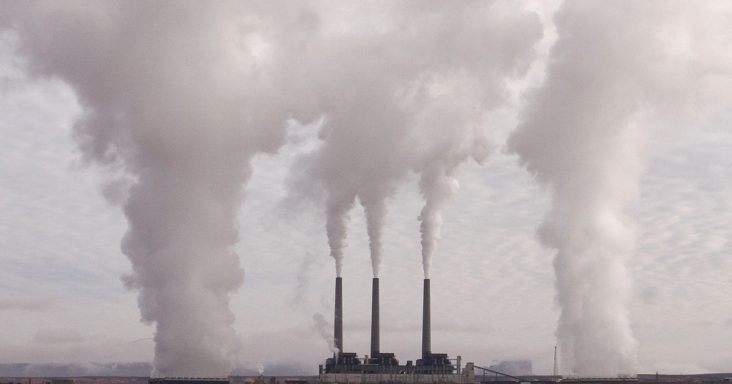EIA: Global energy consumption to exceed efficiency advances
by October 11, 2023 2:27 pm 377 views

Global energy consumption and associated carbon emissions are expected to rise through 2050, according to the U.S. Energy Information Administration (EIA). The increase can be attributed to population growth, increased regional manufacturing and higher living standards.
The EIA released Wednesday (Oct. 11) the International Energy Outlook 2023 that shows energy consumption growth will outpace energy efficiency advances. The previous International Energy Outlook was released in 2021.
“IEO2023 fills an important niche among global outlooks by focusing on a plausible but sober assessment of global energy trends through the first half of the century,” said EIA Administrator Joe DeCarolis. “There is considerable uncertainty in the energy landscape over the next 30 years, and the IEO provides a set of policy-neutral baselines that will help guide sound decision-making.”
Global energy consumption is projected to rise the fastest in residential and industrial sectors. Global consumption of liquid fuels is to rise through 2050, with the fastest growth in industrial applications such as chemical production.
In the transportation sector, economic growth and increased disposable income are expected to rise.
“The transportation and industrial sectors are major consumers of liquid fuels throughout our projection period, but as electric vehicles grow to become a larger part of the global transportation fleet, the industrial sector accounts for an increasing share of petroleum and other liquid fuels consumption,” DeCarolis said.
Between 2022 and 2050, global electric power generating capacity is projected to rise between 55% and 108%. Electricity generation is expected to increase between 30% and 76% over the period. Renewables, nuclear and battery storage will account for most of the growth in capacity and generation.
Electricity generation from renewables and nuclear might rise between 54% and 67%, EIA projections show.
“Renewables become an increasingly cost-competitive source of electricity and grow the fastest in cases that assume high economic growth and greater electricity demand,” DeCarolis said.
Battery storage capacity is expected to comprise between 4% and 9% of global power capacity by 2050, up from less than 1% in 2022.
Growth of non-fossil fuel energy production is expected to outpace fossil fuels, but this varies from region to region. In Western Europe and China, policy, rapid demand growth and energy security considerations are expected to favor resources such as wind, solar and battery storage. This will contribute to a rise in these types of energy generation resources early in the projection period. Regions with affordable coal access, such as the Asia-Pacific region, are projected to consume more coal.
Natural gas and crude oil supply, consumption and trade patterns change to meet rising demand as Russia’s invasion of Ukraine continues to limit Russia’s exports to Western markets. The Middle East and North America are expected to continue to increase natural gas production and exports to meet rising demand, especially in China, India, Southeast Asia and Africa.
SHORT-TERM OUTLOOK
Also on Tuesday, the EIA released the 2023 Winter Fuels Outlook as a supplement to its October Short-Term Energy Outlook, showing U.S. households will pay less for heating this winter compared to last winter. Residential natural gas prices this winter are projected to be 21% lower than last winter. Natural gas is the most common source of heat for U.S. households.
“Natural gas prices this year have been consistently lower than in 2022,” DeCarolis said. “Even if this winter is colder than forecast, we still expect households heated by natural gas to pay less for heat this winter.”
The costs are projected to be flat for households that use propane or electricity for heating. Homes that use heating oil can expect to pay more to heat their homes this winter.
As of the end of October, natural gas inventories are projected to be 6% higher than the five-year average. Propane stocks are 17% higher than the five-year average.
Following are other highlights from the Short-Term Energy Outlook:
- A decrease in oil inventories is expected to contribute to a rise in oil prices in 2024, with international benchmark Brent crude oil prices rising to $95 per barrel in 2024. “We expect crude oil prices to rise in response to lower global oil inventories, although significant uncertainty persists around global demand for oil products,” DeCarolis said.
- The share of U.S. electricity generation from natural gas is projected to fall to 41% in 2024 from 42% in 2023. Still, the 2024 share is greater than it was in 2022 as coal-fired plants continue to be retired and 8 gigawatts of natural gas-fired capacity is added in 2023.
- Renewables are expected to account for one-quarter of U.S. electricity generation in 2024. Wind and solar electricity-generating capacity comprise most of the electricity generation growth. “As coal provides less and less power to the grid, we expect the contributions of natural gas and renewables, in particular, to make up the difference,” DeCarolis said.
